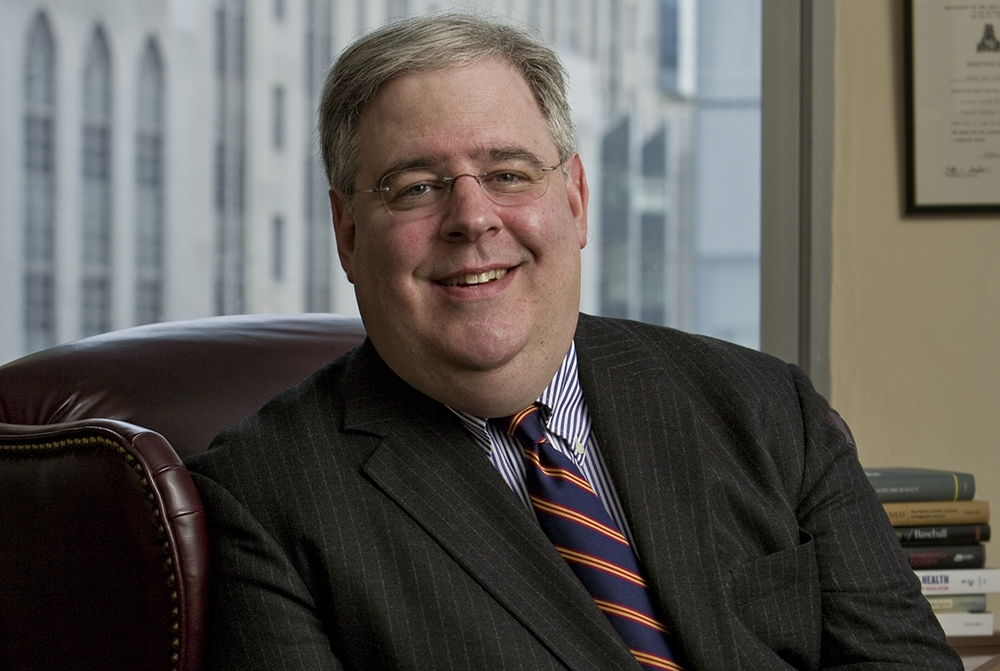Too Little National Data on This Form of Brain Injury
NewYork-Presbyterian/Weill Cornell Physician-Scientists Report on Institutes of Medicine (IOM) Exploratory Meeting on Disorders of Consciousness
NEW YORK (March 9, 2007) — Headline-grabbing news stories involving severely brain-damaged patients such as Terri Schiavo and Terry Wallis aren't doing much to clear up the public's confusion surrounding brain injury and the likelihood that specific patients will recover, say experts at NewYork-Presbyterian Hospital/Weill Cornell Medical Center.
But more and better research on the issue — especially a nationwide, epidemiological study on just how and where severely brain-injured patients are being cared for — could help, according to a commentary written by NewYork-Presbyterian/Weill Cornell physician-scientists and published recently in Neurology, the journal of the American Academy of Neurology. The paper reports on an Institutes of Medicine (IOM) exploratory meeting on disorders of consciousness.
"Right now, we don't even know how many Americans with conditions such as the vegetative state or the minimally conscious state are being cared for in medical centers and nursing homes nationwide," explains the article's lead author, Dr. Joseph Fins, chief of the Division of Medical Ethics in the Departments of Public Health and Medicine, and professor of medicine, professor of public health, and professor of medicine in psychiatry at Weill Cornell Medical College. He is also director of medical ethics and chairman of the ethics committee at NewYork-Presbyterian Hospital/Weill Cornell Medical Center.
"Getting those numbers in a countrywide survey is an essential first step for the kind of research that would help us in the diagnosis, prognosis and treatment of these severely debilitating conditions," adds senior author Dr. Kathleen Foley, who chaired the IOM exploratory meeting. She is professor of neurology and neuroscience and professor of clinical pharmacology at Weill Cornell, and an attending neurologist at NewYork-Presbyterian/Weill Cornell. She is also attending neurologist in the Pain and Palliative Care Service at Memorial Sloan-Kettering Cancer Center (MSKCC).
The Schiavo and Wallis cases, especially, illustrate the need for better understanding of these disorders, the experts say. In 2005, Americans were transfixed by the medical and legal tug-of-war over Terri Schiavo, a Florida woman who had been in what neurologists described as a permanent vegetative state. Autopsy findings were consistent with that diagnosis. The second case involved 42-year-old Terry Wallis of Mountain View, Ark. Wallis had been in what neurologists call a "minimally conscious state" (MCS) since a 1984 truck accident. In 2003, he unexpectedly began talking and moving after years of impairment.
Unlike the Schiavo case, MCS patients like Wallis "show intermittent but unmistakable signs of consciousness, including attention, intention and even sporadic communication," explains the article's co-author Dr. Nicholas Schiff, associate professor of neurology and neuroscience and associate professor of public health at Weill Cornell, who has done extensive research on the Wallis case. Dr. Schiff's research suggests that Wallis' brain had been quietly making new neuronal connections in the years prior to his "awakening."
The need to identify and encourage other potential recoveries from MCS in patients is just one reason scientists must be given the resources to track the care and condition of brain-injured patients nationwide, the article's authors say.
"The Wallis case demonstrates that, even years after injury, the minimally conscious brain has the potential, in rare cases, for recovery. It also lays out the possibility that this process might even be accelerated and helped," Dr. Fins says.
And yet, today, more than 100,000 Americans are thought to be kept in long-term care facilities across the U.S. under what's known as "custodial care," with little consistent follow-up.
"Without national data, we don't know how many patients are in this situation. In fact, we don't even know how frequent or likely recoveries like Mr. Wallis' might be," Dr. Foley notes. "Obviously, we need to do a better job of keeping track of all patients with disorders of consciousness, including periodically reassessing them for any changes in neurological function. That sort of database would greatly enhance research."
Periodic re-evaluation of patients could teach scientists much that is new about disorders of consciousness, which vary widely from patient to patient and over time, the experts say.
"For example, 16 percent of patients in the vegetative state six months following traumatic brain injury recover consciousness at one year with about a quarter of them recovering independent function. It is inaccurate to think that all disorders of consciousness are immutable and fixed," Dr. Fins says.
Currently, however, a proper diagnosis of these patients is fraught with confusion and error. According to some estimates, as many as 40 percent of patients in the minimally conscious state may be currently misdiagnosed by doctors as being in a vegetative state, with little or no hope of recovery.
"Again, it all comes back to our need for more insight into these conditions, their relative prevalence and the changes that may or may not be going on neurologically over time," Dr. Fins says.
"Cases like those of Schiavo and Wallis tend to blur the lines between the minimally conscious state and the vegetative state," Dr. Fins says. "But we have an opportunity now, with advances in brain imaging technology, to improve our understanding. Even a modest investment in epidemiological and clinical research will pay off with better diagnostics; and better means of giving loved ones realistic expectations of patient outcomes — good or bad," he adds.
For more information, the public may call (866) 697-6397.
NewYork-Presbyterian Hospital/Weill Cornell Medical Center
NewYork-Presbyterian Hospital/Weill Cornell Medical Center, located in New York City, is one of the leading academic medical centers in the world, comprising the teaching hospital NewYork-Presbyterian and its academic partner, Weill Cornell Medical College. NewYork-Presbyterian/Weill Cornell provides state-of-the-art inpatient, ambulatory and preventive care in all areas of medicine, and is committed to excellence in patient care, research, education and community service. NewYork-Presbyterian, which is ranked sixth on the U.S.News & World Report's list of top hospitals, also comprises NewYork-Presbyterian Hospital/Columbia University Medical Center.
Office of Public Affairs
pr@nyp.org

